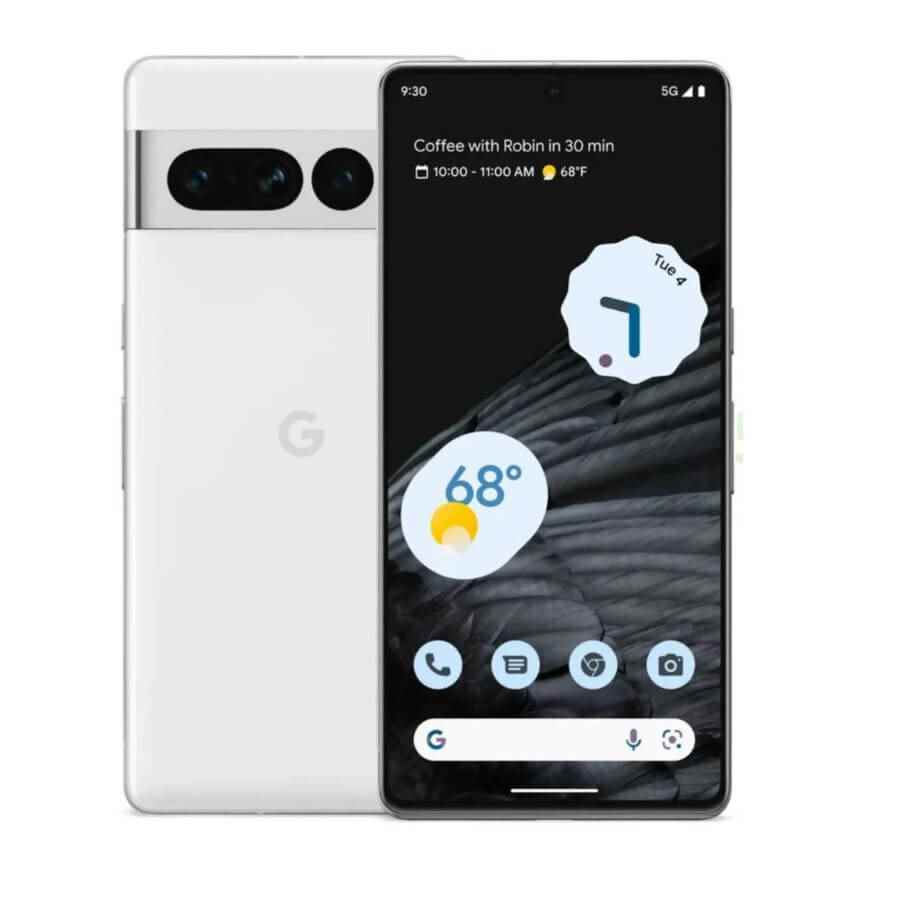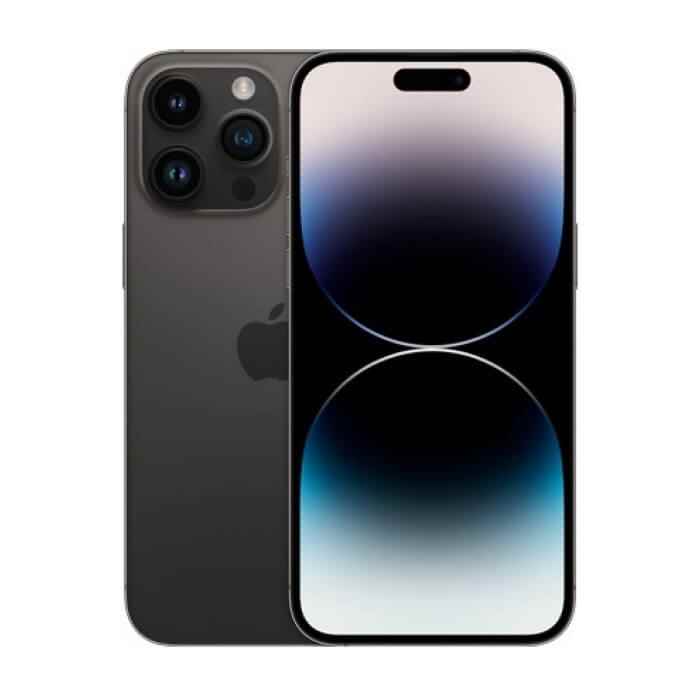lasting for years iPhone domination, Googleto self-development and apple‘s own premium, top-of-the-line smartphones to create a rival line of “professional” phones to fight.
Following the launch of Apple’s iPhone 14 series, Google Pixel 7 introduced the series. Both series will face off, but the real competition is between the top-performing models, the Pixel 7 Pro and iPhone 14 Pro. Both flagships promise the best software experience any company has to offer, backed by great camera performance. Request Google Pixel 7 Pro vs iPhone 14 Pro and our review of which one you should choose.
Design
The iPhone 14 Pro and Pixel 7 Pro are good looking phones. Both have classier designs than their counterparts. The iPhone 14 Pro retains the flattened design of the last generation but comes with a big change on the front. The notch is gone and in its place is a new pill-shaped cutout that Apple calls Dynamic Island. Dynamic Island also promises a new user experience revolving around cutting. The Pixel 7 Pro, on the other hand, keeps the same look as the Pixel 6 Pro, with the camera viewfinder now looking slightly different.
Both phones have solid build quality. These are ordinary glass skins, but the Pixel 7 Pro uses the viewfinder to split it into two parts. The iPhone 14 Pro, on the other hand, has an all-glass back with a glass-mounted camera lens area. The iPhone 14 Pro uses Ceramic Shield glass, which is more unbreakable but more scratch-prone. On the other hand, the Pixel 7 Pro has Gorilla Glass Victus, which provides great protection against breakage, but not as good as the Ceramic Shield. Another important difference is that while the iPhone 14 Pro gets a stainless steel frame, the Pixel 7 Pro uses an aluminum frame. While both are adequate for daily use, the iPhone 14 Pro is a bit of a strong build here.
Screen
The Pixel 7 Pro’s 6.7-inch display comes with a better pixel density of 512 ppi when running at 1440 x 3120 pixels. By comparison, the 6.1-inch screen of the iPhone 14 Pro runs at a resolution of 1179 x 2556 pixels with a pixel density of 460 ppi. However, it can’t be as bright as the iPhone 14 Pro’s display, which can reach peak brightness of up to 2,000 nits, while the Pixel 7 Pro’s display goes up to 1,500 nits. That makes the 14 Pro’s screen better, but the 7 Pro’s screen isn’t slack either. Both displays have a 120Hz refresh rate.
Google Pixel 7 Pro and iPhone 14 Pro Max: Features
| Features | Apple iPhone 14 Pro Max | Google Pixel 7 Pro |
|---|---|---|
| Structure | Stainless steel middle frame”Ceramic Shield” front and rear | Aluminum middle frameGorilla Glass Victus is backGorilla Glass Victus front |
| Dimensions and Weight | 160.7 x 77.6 x 7.9mm, 240 grams | 162.9 x 76.6 x 8.9mm, 212 grams |
| Screen | 6.7 inch Super Retina XDR OLED | 6.7 inch QHD+ 120Hz AMOLED |
| Screen Speed | ProMotion refresh rate from 1Hz to 120Hz | Variable refresh rate from 10Hz to 120Hz |
| Processor | Apple A16 Bionic | Google Tensor G2 |
| RAM | 6GB RAM | 12GB RAM |
| Storage | 128GB/256GB/512GB/1TB | 128GB/256GB/512GB |
| Battery | 4,323 mAh, No charger in the box | 5,000 mAh No charger in the box |
| Fast charging | 20W wired fast charging | 30W wired fast charging |
| Wireless charging | 7.5W wireless charging, 15W MagSafe wireless charging | 23W wireless charging |
| Security | Face ID | Optical in-display fingerprint scanner |
| Rear Camera(s) | Mother: 48MP wide, f/1.8 aperture Second: 12MP ultra-wide, f/1.8 aperture Third: 12 MP telephoto, 3x optical zoom, f/2.8 Fourth: LIDAR camera | Mother: 50 MP wide, Samsung GN1, f/1.9, 1/1.31 inch Second: 12MP ultra-wide, f/2.2 Third: 48MP Periscope, f/3.5 |
| Front camera | 12MP | 11MP |
| Charge entry | lightning | USB-C |
| Sound | stereo speaker | stereo speaker |
| Connection | 5G (below 6 GHz and mmWave) 4×4 MIMO and Gigabit LTE2×2 MIMO with LAA, Wi-Fi 6 (802.11ax)Bluetooth 5.0 | 5G (mmWave) Wi-Fi 6 (802.11ax) with 2×2 MIMO for almost all regions and carriers except AT&T in the US Bluetooth 5.2NFC |
| Colors | Purple, Silver, Gold, Black | Green, Grey, White |
| Software | iOS 16 | Android 13 |
| Water Resistance | Yes, IP68 | Yes, IP68 |
| Other features | Dual eSIM in the US, Dual physical SIM elsewhere | Dual physical SIMFace Unlock in some regions |

Performance and Hardware
The strength of the iPhone has always been its performance, with a best-in-class processor thanks to Apple Silicon. Starting with the Pixel 6 series, Google has recently entered the custom processor industry. The Apple iPhone 14 Pro has the A16 Bionic chip, while the Pixel 7 Pro has the Google Tensor G2. The A16 wins in almost every comparison you throw at it, and in many practical use cases. However, unless you plan to use your phone regularly for some CPU-intensive tasks like video editing, you’re unlikely to see a big difference in day-to-day usage.
The iPhone 14 Pro also wins with its storage options. Apple offers the 14 Pro in 128GB, 256GB, 512GB and 1TB storage capacities. Pixel 7 Pro also has similar variants except 1TB. Marketing for both Pixel and iPhone puts a lot of emphasis on respective camera performances. So the Pixel with the 1TB storage option missing is a bit disappointing. Sure, you get a solid cloud experience with the Pixel 7 Pro, but it would be nice if there was a 1TB local storage option. So, if you want more local storage, the phone you should choose is the iPhone 14 Pro.
Camera
Apple has historically had superior camera experience on iPhones, but the Pixel lineup is gradually improving on that front with each passing year. The setup with the Pixel 7 Pro remains similar to that of the 6 Pro, but Google’s image processing is expected to offer better performance. The iPhone 14 Pro, on the other hand, is upgrading its camera hardware for the first time in a while, and it’s backed by more software capabilities, so it’s pretty hard to beat it.
With the Pixel 7 Pro, you get a 50 MP primary camera, a 48 MP telephoto camera, a 12 MP ultra-wide and an 11.1 MP front camera. On the other hand, the iPhone 14 Pro gets a 48MP main camera, 12MP ultra-wide, 12MP telephoto and dual-lens 12MP camera on the front.
The telephoto experience on the Pixel 7 Pro is expected to be superior to that of the iPhone 14 Pro, thanks to the larger sensor and improved processing. On the video side, the two phones look the same on paper. You get 4K 60fps video, 1080p 240fps video, and 10-bit HDR on both. The Pixel 7 Pro also has a Cinematic Blur feature that competes with Apple’s Cinematic Mode.

While iPhone has had great image processing and color science for years, you can expect it to get better on the iPhone 14 Pro thanks to a larger sensor that provides higher levels of detail. Pixel serves on these fronts as well. In terms of video capabilities, the two match on paper, but the iPhone 14 Pro is more likely to impress than the Pixel 7 Pro. It will be difficult to choose between these two based on camera specs, but overall the iPhone 14 Pro wins by a small margin.
Battery and Charger
On the battery life front, the iPhone 14 Pro promises up to 23 hours of video playback and 75 hours of audio playback. The only guess we got with the Pixel 7 Pro was “All-day battery”, which hasn’t been tested yet. The battery life of the Pixel 7 Pro remains a mystery for now. But the Pixel 7 Pro has a shot here, as many users have been complaining about the iPhone 14 Pro’s battery life.
Apple iPhone 14 Pro vs Google Pixel 7 Pro: Which Is Better?
The iPhone 14 Pro and Google Pixel 7 Pro are very capable phones, so this is a difficult question to answer. Both Android and iOS are great operating systems, so whichever you choose you won’t miss much.
However, there are certain use cases that would make one of these phones more suitable than the other. iOS offers a significant advantage in its privacy, which provides an overall less intrusive experience. On the other hand, Android offers flexibility, which at times can come at the expense of privacy. Apple made significant changes to the iPhone after a long break with the iPhone 14 Pro. It definitely feels like a different phone from the 13 Pro. The Pixel 7 Pro, on the other hand, shares many similarities with the 6 Pro, so don’t expect it to be too different.

As for performance, the iPhone 14 Pro will likely remain the best performing phone on the market, although the Pixel 7 Pro will perform very well. Both phones have comparable displays, but the Pixel 7 Pro has a larger and higher resolution display, while the iPhone 14 Pro has a brighter display. Battery life is on par at the moment, but that could change over the next few months as software updates and more user data give us a clearer picture. Google Pixel 7 promises three years of software updates and five years of security patches. On the other hand, Apple does not openly promise updates, but it regularly surpasses Google’s figure.
The iPhone 14 Pro is Apple’s best iPhone yet, and the Pixel 7 Pro is Google’s best Android phone yet. All things considered, if you want the best phone, the iPhone 14 Pro is the way to go. If you want to save some money and still get a really good phone, it looks like the Pixel 7 Pro is the phone to buy.